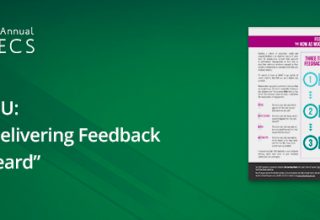
Our basic assumption is that the key to influencing the performance of a client is the capacity of the client to reflect on his/her performance (thought experiments and action research) and to modify his/her behavior based on this reflection.
1. The first step involves a dialogue between the coach and client during which the desired outcomes are identified.
2. The second step in this coaching process is identifying those specific (“vital”) behaviors that produce the desired outcomes. Focus on the behavior not the outcomes. Optimally, data will be gathered in several ways (two or more options will be chosen):
Option One – Feedback from Others in Organization: Client invites other people with whom he or she works to provide feedback regarding the vital behavior identified by the coach and client during step one. The feedback should be solicited from those to whom the client reports, from those who report to the client and from those who are peers in the same part of the organization and even in other parts of the organization (especially those who are “internal customers” of the client). See “Soliciting Feedback and Suggestions” for a list of questions that the client might ask of those who are invited to provide feedback.
Option Two – Personal Reflection: When in the past has the client been successful in achieving the desired outcome? What was the specific vital behavior that helped her achieve this outcome? Ask about the setting in which this occurred.
Option Three – Direct Observation: Coach observes client in action, identifying specific, vital behaviors that lead to (or at least towards) desired outcomes (“catch them when they are doing it right”).
Option Four – Comparative Analysis: Coach shares his own experiences in achieving desired outcome, then coach and client identify the specific vital behavior(s) (and setting) that led to this success and ways in which this behavior differs from (as well as is similar to) what the client does (advocacy inviting inquiry).
Option Five – Comparative Observation: Client (and preferably also the coach) observes another employee in practice who consistently achieves the desired outcome. Coach and client identify ways in which this successful employee’s performance differs from (as well as is similar to) what client does. What are the specific vital behaviors that seem to produce desired outcomes? Identify key elements of setting in which this employee works successfully.
3. The third step in this coaching process is engaging in action research.
Client and coach identify the vital behavior and key settings (based on second step analysis).
Client and coach prepare plans for setting in which vital behavior(s) can be tried out and outcomes observed (by client and, optimally, coach).
Client tries out vital behavior(s) in identified setting at least three times.
Client and coach assess the client’s use of vital behavior. What was learned?
If necessary, one or more additional tests are performed and assessed.
4. The fourth step in this coaching process is establishing a pattern of successful vital behaviors that can be sustained.
Client and coach address the fundamental question: “What do I (the client) do with what I have learned about myself and about the setting(s) in which I can be most successful in achieving the desired outcome(s)?”
Client and coach produce plans for the client’s sustained performance, including periodic meetings of coach and client.
Coach and client periodically meet to acknowledge and celebrate the client’s successful work, and to reflect on and identify modifications in plan, based on both successes and failures.
Download Article 1K Club




















